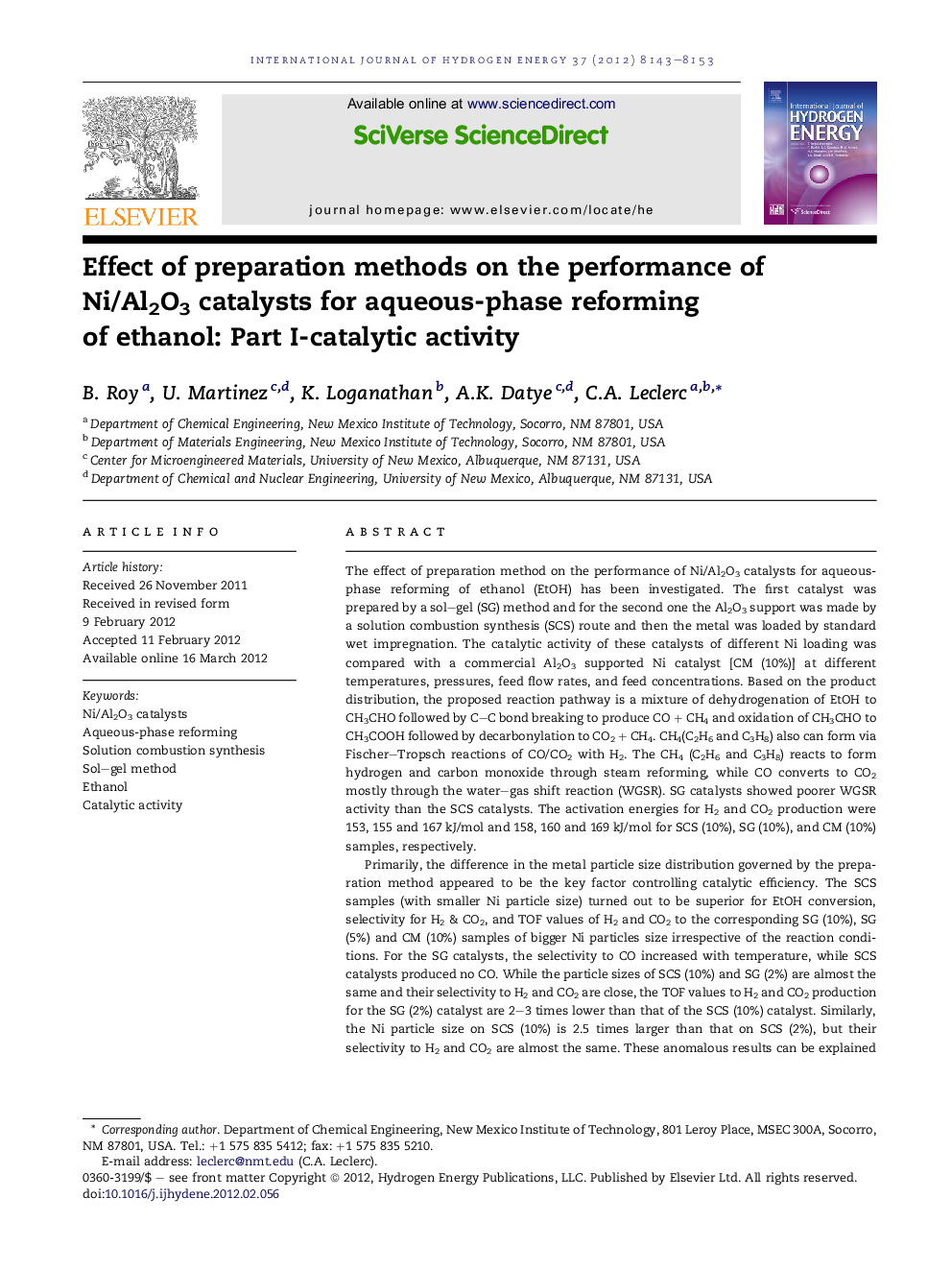| کد مقاله | کد نشریه | سال انتشار | مقاله انگلیسی | نسخه تمام متن |
|---|---|---|---|---|
| 1275311 | 1497559 | 2012 | 11 صفحه PDF | دانلود رایگان |

The effect of preparation method on the performance of Ni/Al2O3 catalysts for aqueous-phase reforming of ethanol (EtOH) has been investigated. The first catalyst was prepared by a sol–gel (SG) method and for the second one the Al2O3 support was made by a solution combustion synthesis (SCS) route and then the metal was loaded by standard wet impregnation. The catalytic activity of these catalysts of different Ni loading was compared with a commercial Al2O3 supported Ni catalyst [CM (10%)] at different temperatures, pressures, feed flow rates, and feed concentrations. Based on the product distribution, the proposed reaction pathway is a mixture of dehydrogenation of EtOH to CH3CHO followed by C–C bond breaking to produce CO + CH4 and oxidation of CH3CHO to CH3COOH followed by decarbonylation to CO2 + CH4. CH4(C2H6 and C3H8) also can form via Fischer–Tropsch reactions of CO/CO2 with H2. The CH4 (C2H6 and C3H8) reacts to form hydrogen and carbon monoxide through steam reforming, while CO converts to CO2 mostly through the water–gas shift reaction (WGSR). SG catalysts showed poorer WGSR activity than the SCS catalysts. The activation energies for H2 and CO2 production were 153, 155 and 167 kJ/mol and 158, 160 and 169 kJ/mol for SCS (10%), SG (10%), and CM (10%) samples, respectively.Primarily, the difference in the metal particle size distribution governed by the preparation method appeared to be the key factor controlling catalytic efficiency. The SCS samples (with smaller Ni particle size) turned out to be superior for EtOH conversion, selectivity for H2 & CO2, and TOF values of H2 and CO2 to the corresponding SG (10%), SG (5%) and CM (10%) samples of bigger Ni particles size irrespective of the reaction conditions. For the SG catalysts, the selectivity to CO increased with temperature, while SCS catalysts produced no CO. While the particle sizes of SCS (10%) and SG (2%) are almost the same and their selectivity to H2 and CO2 are close, the TOF values to H2 and CO2 production for the SG (2%) catalyst are 2–3 times lower than that of the SCS (10%) catalyst. Similarly, the Ni particle size on SCS (10%) is 2.5 times larger than that on SCS (2%), but their selectivity to H2 and CO2 are almost the same. These anomalous results can be explained by the microstructural and phase compositional differences of the catalysts imposed by the variation of the preparation methods and will be discussed in detail in part II of this paper.
► Combustion synthesized supports obtained smaller Ni particles than sol-gel supports.
► Ni on combustion synthesized supports was more active than Ni on sol-gel supports.
► Product TOFs were different for the same sized Ni particles on the two supports.
► The proposed major reaction pathway is: C2H5OH→−H2CH3CHO→CH4+CO→H2OCO2.
Journal: International Journal of Hydrogen Energy - Volume 37, Issue 10, May 2012, Pages 8143–8153